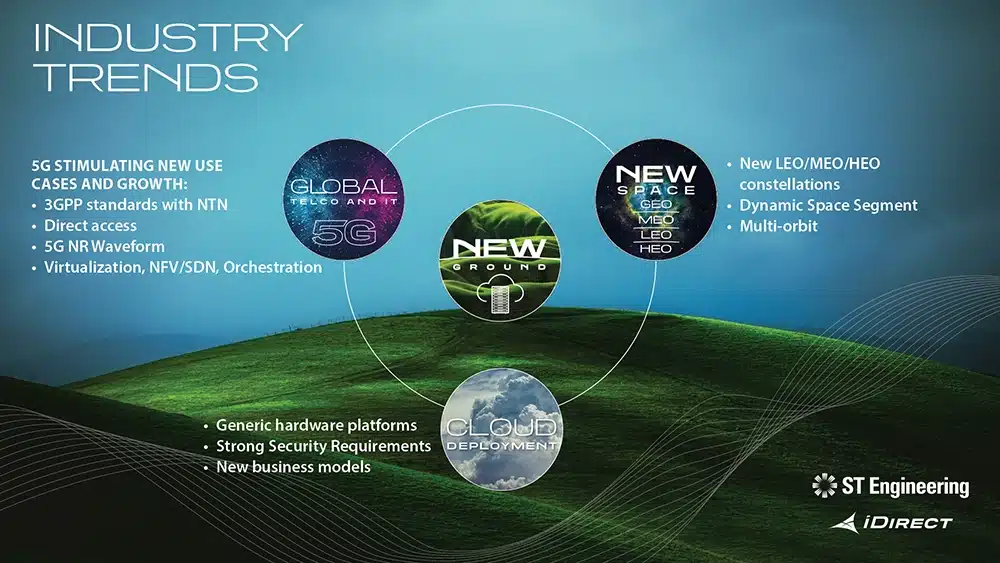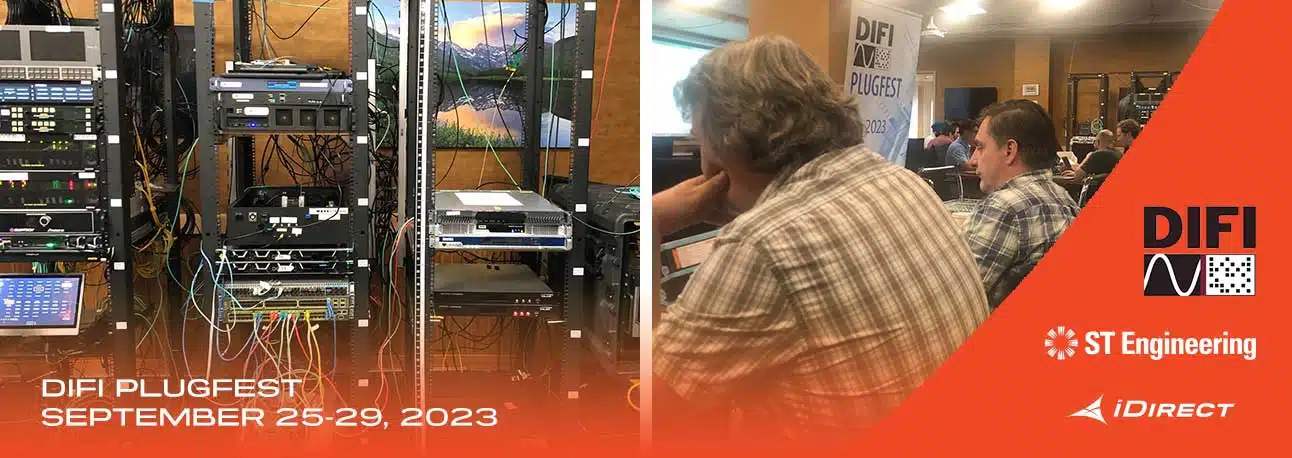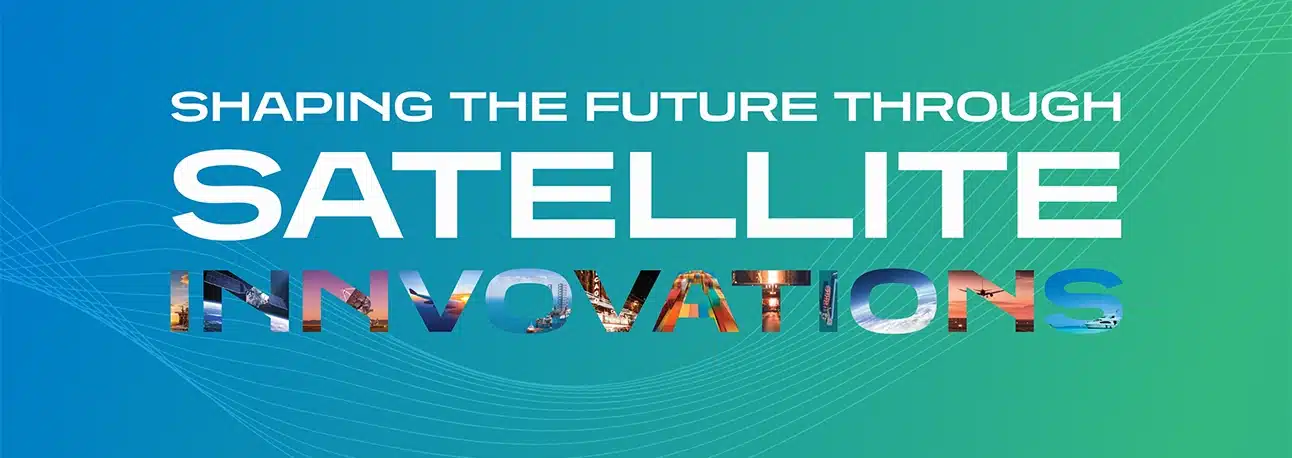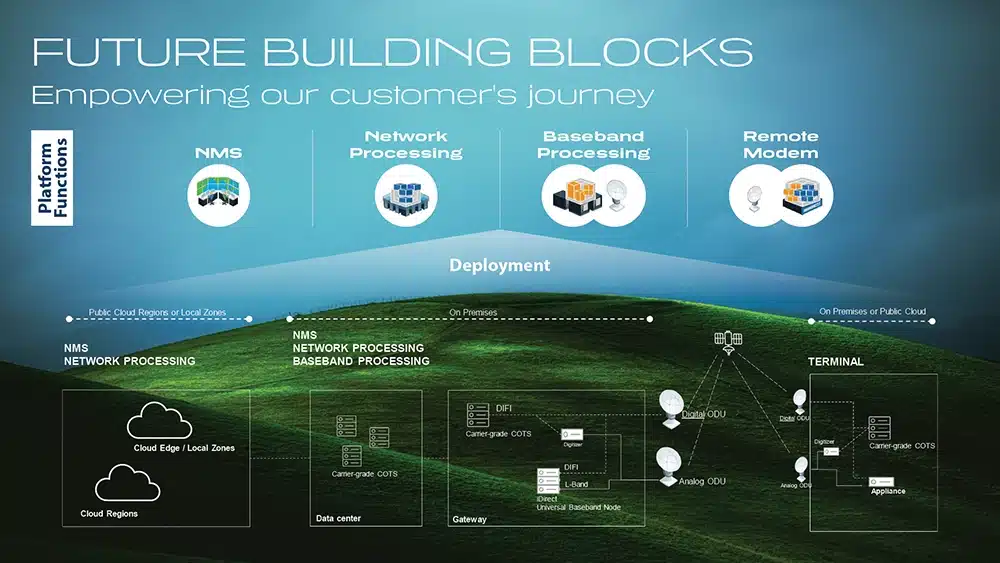A closer look at our industry’s future of standardization and virtualization
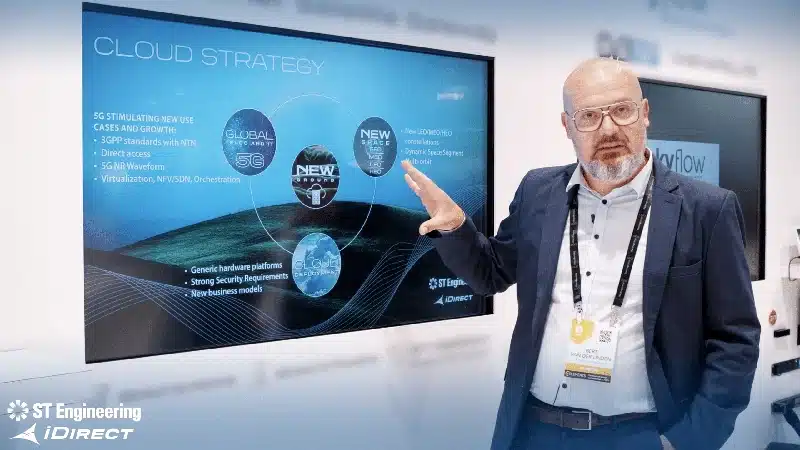
By Bert Van der Linden
The traditional teleport as we know it is undergoing a complete digital makeover. Demand for satellite capacity over recent years has driven a paradigm shift in space segment capability. This evolution has reached the ground, where it will open broad avenues of opportunity for satellite operators, service providers, enterprise customers – and everyone in between. However, when it comes to providing a new range of services to customers, it is important that these are flexible, and that the Total Cost of Ownership (TCO) truly fits the requirements of the individual customer. There is no one size fits all and so dialog and understanding between the provider and the customer is critical to empower their journey towards digitization and cloudification.
Key Trends
The trends driving these changes are multiple:
- There is an evolution of service providers’ and operators’ virtualized platforms with a move from the private to the hybrid cloud.
- Ground stations are undergoing their own digital transformation, gravitating towards common tooling, Software Defined Network (SDN) functions and automated deployment models.
- Cloud Service Providers (CSPs) are building a footprint to host virtualized satcoms, investing in their edge infrastructure and preparing to accommodate satellite technology.
- The popularity of as-a-service offerings is growing, as operators prefer to focus on their core business, leveraging the satellite ground segment provider’s augmented services with a positive impact on Total Cost of Ownership (TCO).
Two years ago, we launched the New Ground initiative, an acknowledgement of these fundamental changes brought about by the advent of multi-orbit constellations in LEO, MEO and HEO; the growth of 5G and stimulation of new use cases; and demand for cloud-based services. It marked the start of a journey of innovation and a complex step change that will see the industry move from traditional analog to all IP, away from hardware and towards software-based functions in a virtualized environment.
New Ground has taken on a life of its own across the industry today and is reflected in the spirit of collaboration that’s evident in the work we’re doing with the telco sector. We’re engaged with 3GPP, MEF and other groups within our industry, as we move to create the critical standards that will drive this transformation forwards.
Watch this video: Demonstration of a Digital Interface at our Labs
Challenges
There are three main drivers for the digitization of the teleport, and they are: the cloud, increasing spectrum, the need to be more flexible, and the need for real estate.
The transition does present certain challenges for our customers. These include the operational complexity associated with the deployment of satellite networks, the lengthy manual process, the ability to scale and to increase security, availability, and flexibility across the network.
ST Engineering iDirect’s Next Generation capabilities will tackle these challenges and enable the digitization of the teleport in a cost-effective way that will result in lower TCO. We will augment our business offering through a central cloud native Network Management System (NMS), deployable On-Premises (hosted in-house) and Off-Premises (hosted by a third party), as well as Network Processing so that we are able to leverage the capabilities of the Cloud Service Provider’s (CSP) infrastructure with a flexible choice of deployment options. Our baseband processing will comprise the creation of a digital interface resulting in higher flexibility by using Radio over IP. Finally, by virtualizing the gateway, virtual baseband functions will become available allowing the use of Commercial off the Shelf (COTS) infrastructure.
Where are we on our journey?
Standards
Along with other industry players, we have spearheaded the work on standards through our membership of the DIFI (Digital Intermediate Frequency Interoperability) consortium.
Standards are a critical part of ground segment evolution. Converting hardware into software where it is installed and managed remotely via third-party data centers, will give satellite operators more flexibility over their networks and speed up how quickly they can respond to customer demands.
Our work with DIFI has included important Proof of Concept work to demonstrate the interoperability of the standard. At Satellite 2023, we undertook a demo that showcased the conversion of analog signals to digital signals, using the DIFI 1.1 Standard. In October, we participated in the first DIFI Plugfest where we were able to exchange DIFI streams between us and other vendors.
More on the DIFI PlugFest in this Blog:
Leveraging the DIFI standard, the management of the radio signals at the teleport will be simplified and will introduce improved flexibility, and routing the signal to and from the growing number of antennas at the teleport. The standardization will result in flexible delivery over IP connectivity and improved and simplified maintenance. Standardizing on IP workflows, all the way to the antenna, will result in uniformity on how these IP flows are managed and operated, including significant reduction of RF complexity at the teleport.
Virtualized modem
Over one year ago ST Engineering iDirect started to collaborate with Microsoft Azure Space, as well as other CSPs, on driving the adoption of virtualization and cloud to enable the digital transformation of the ground segment.
At this point, we are at a Proof of Concept stage. We set out to virtualize key aspects of our modem and baseband ground segment to enable our satcom solutions to run in Azure. To that end, we have been working on the abstraction of the software functionality from the hardware and porting our Modem Baseband Functions to a COTS compute infrastructure provided by Azure. We are also leveraging Azure’s cloud services and tooling to orchestrate these baseband functions onto the cloud infrastructure.
To date, we have successfully demonstrated the deployment of these functions. First, in late 2022 we highlighted the demodulation capability in the format of an iDirect virtualized high-speed SCPC modem. Then, in May 2023 we showcased the modulator use case.
Check out this blog on the Proof of Concept with Microsoft:
These have been important milestones, and we are on track with our developments. However, we must now further evaluate the next steps that need to be taken to expand our PoC to the hub, baseband and remote modems, and to ensure that we can cater for a wide range of throughputs.
Processing in the cloud
Next, in collaboration with Microsoft again, we are kicking off a Proof of Concept for which we plan to deploy our network processing virtualized functions on Azure Cloud Infrastructure. We want to prove that satellite network architectures can be built from orchestrated Software Defined Network Functions with deploy ability with CSP managed On Premise infrastructure or in cloud regions. This would allow for a combination of cloud infrastructure with automation tooling on commercial off-the-shelf components leveraging the cloud to its fullest potential while reducing TCO.
Through cloud-based services, providers and satellite operators can gain privileged access to a complete family of networking applications and can then package them into advanced service offerings that will provide customers, not only satellite connectivity, but also cybersecurity, hybrid network, application-based QoS, and end-to-end service orchestration.
Conclusion
Virtualization of satcom functions is a complex undertaking, comprised of many different facets, but through collaboration with industry bodies and players both within the satellite and telco sectors, we are making significant steps forward.
Our ultimate goal is to empower our customers’ journey to digitization and cloudification. To achieve this, we need to keep talking, keep sharing information, needs, requirements, use cases, business models and challenges. Through understanding our customers, we can then offer the most flexible choices that will fit every use case. By developing the key building blocks, we place the power in their hands, and set them up for success in a new era of connectivity.
Stay tuned.
Discover more
WTA Webinar – Designing the Software-Defined Ground Segment of the Future
